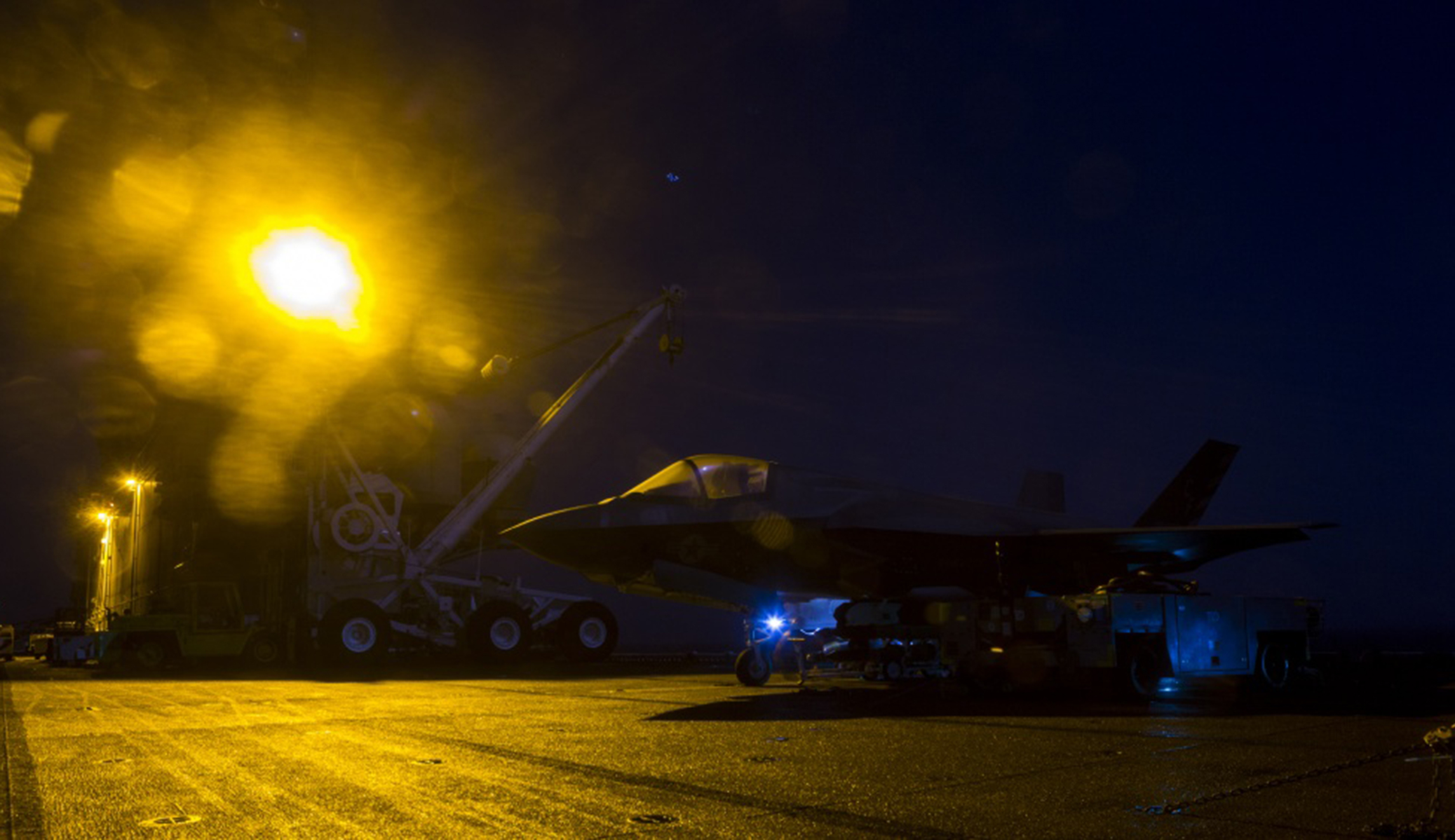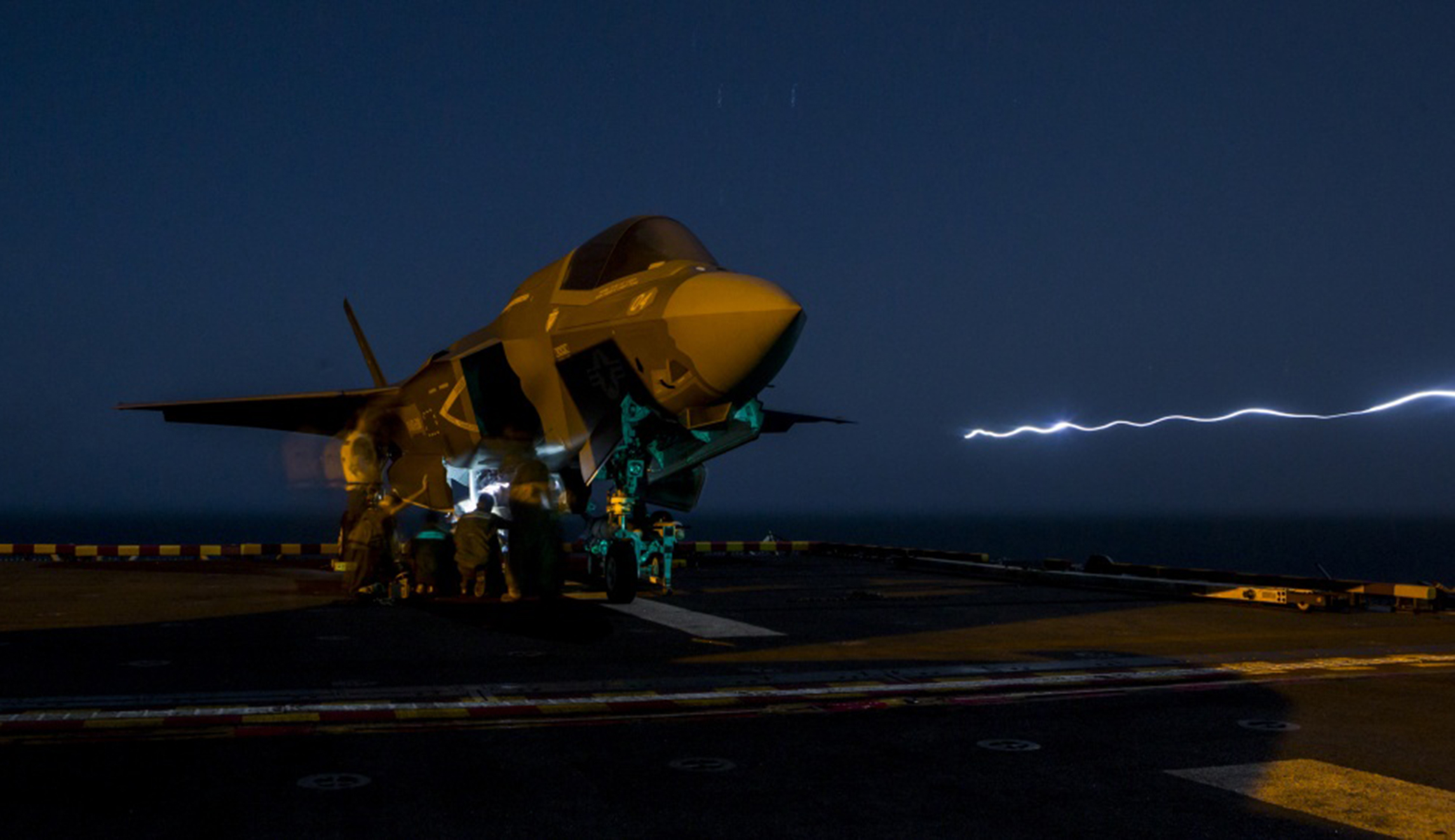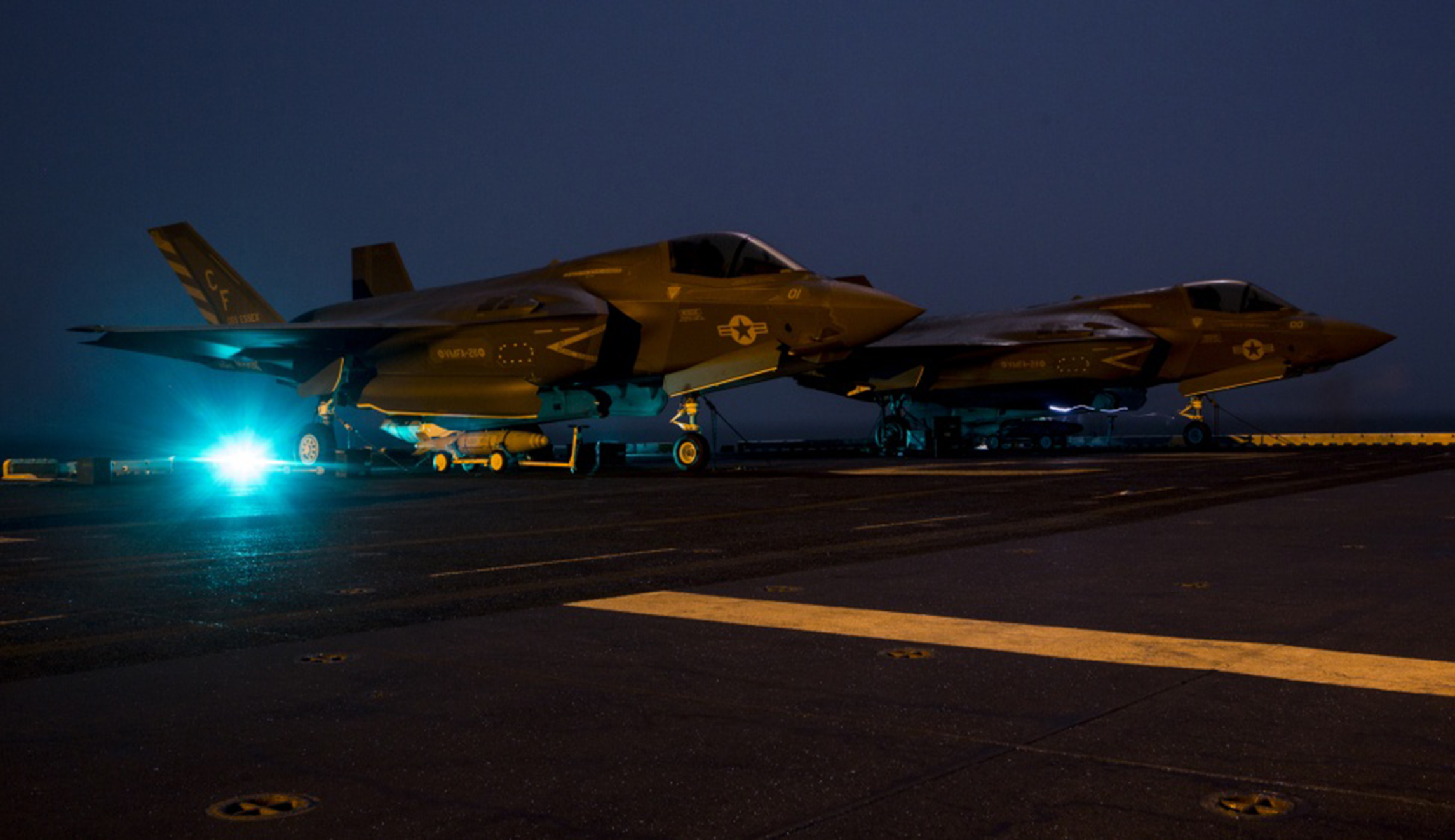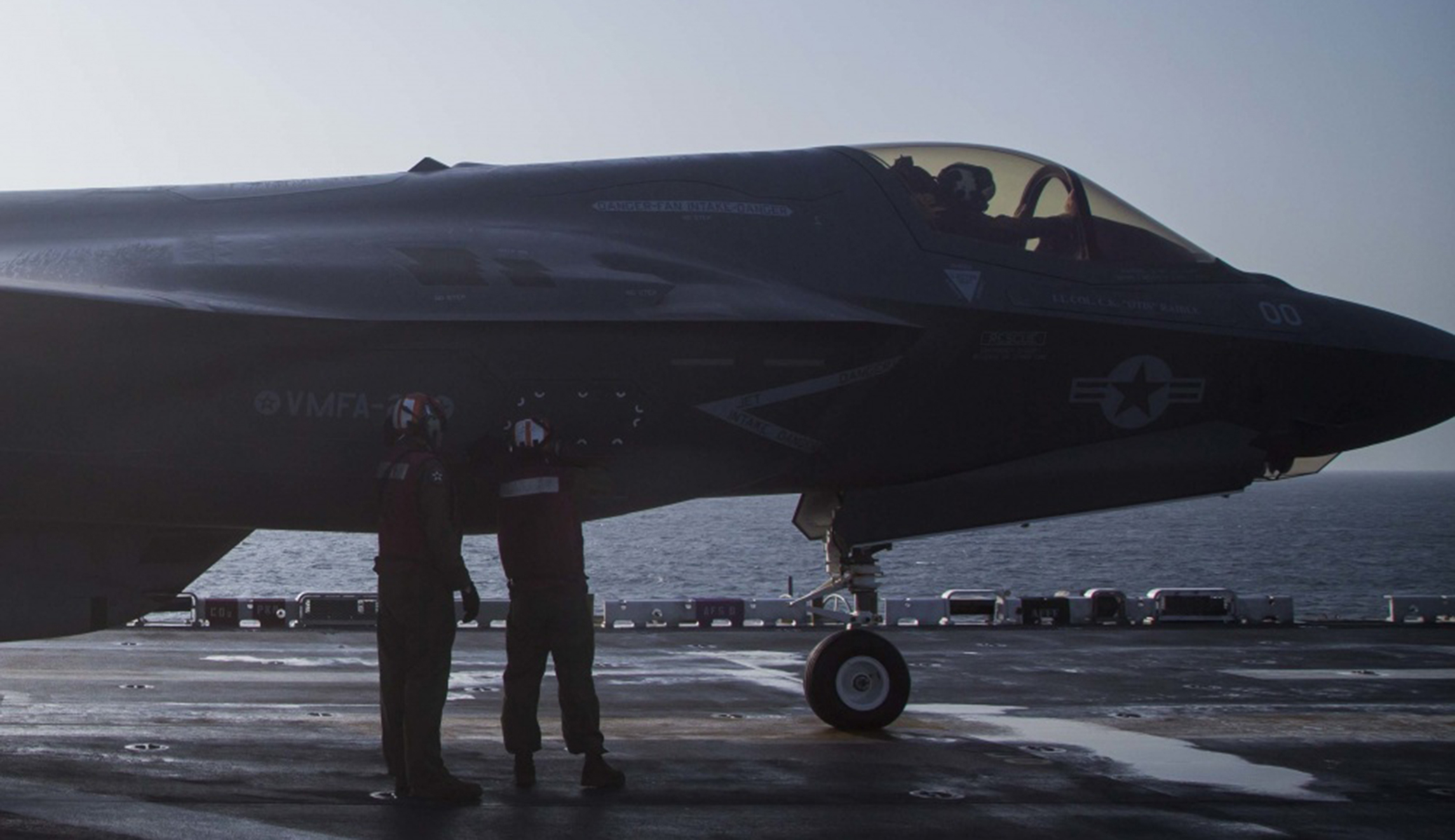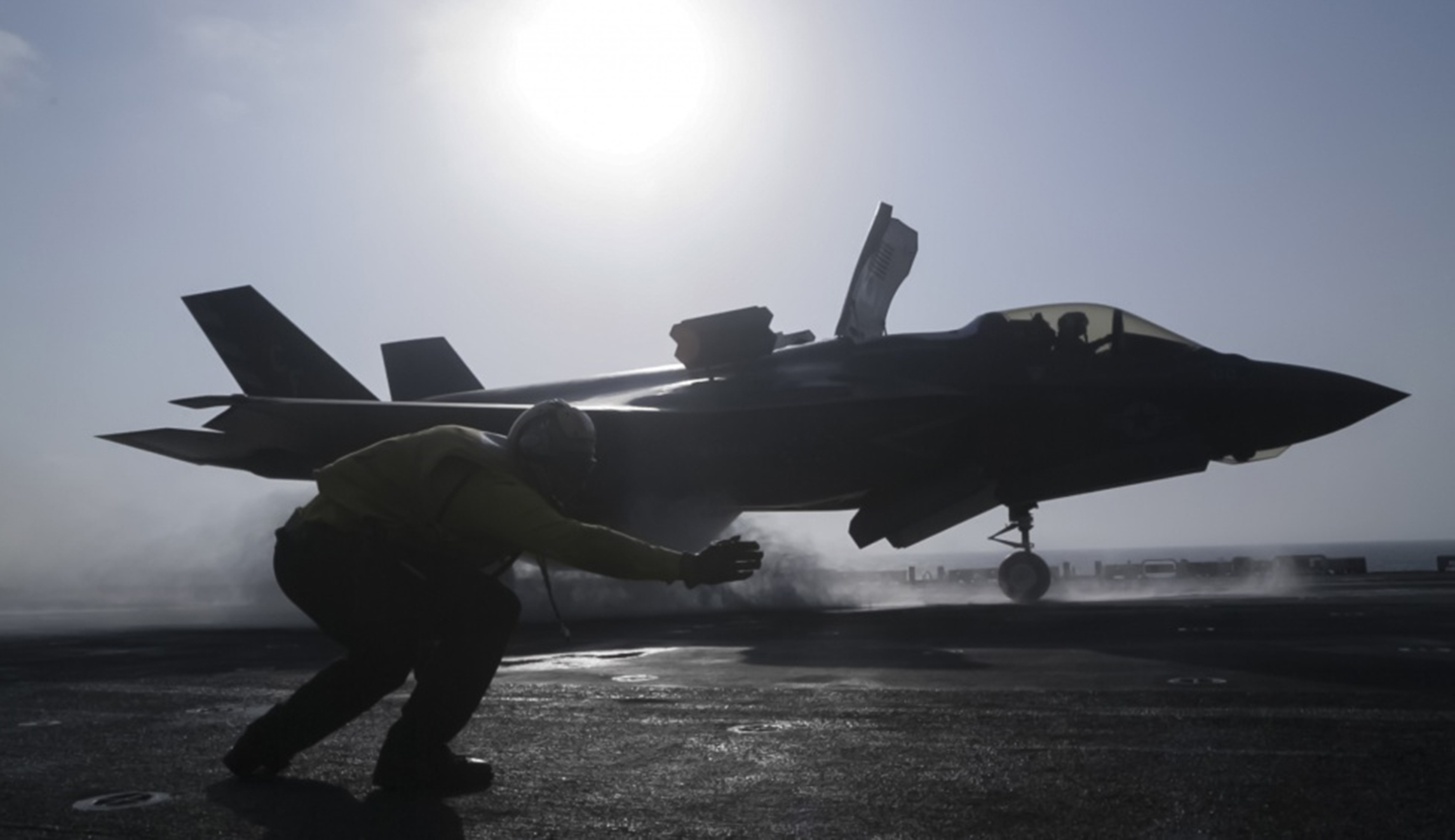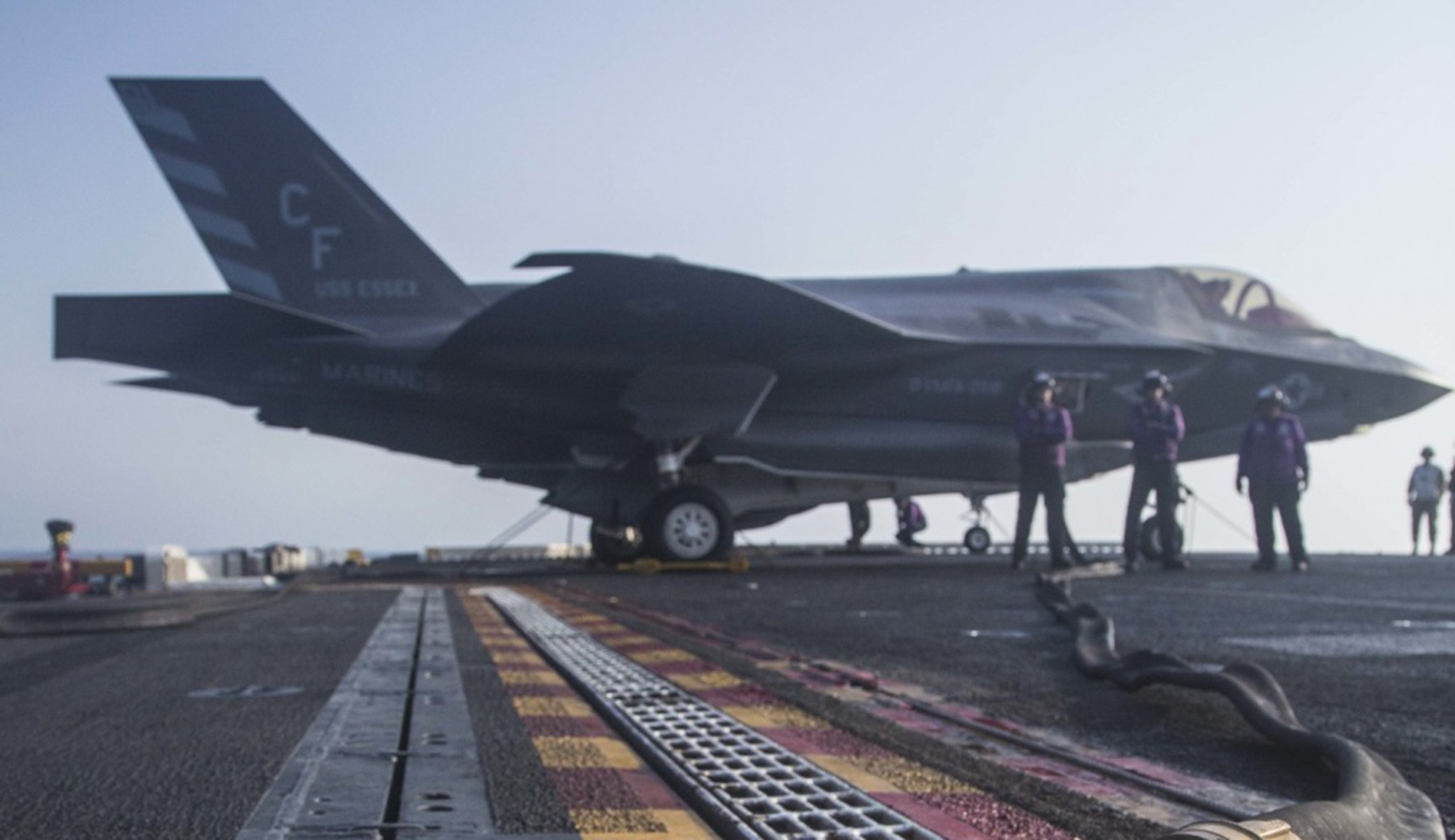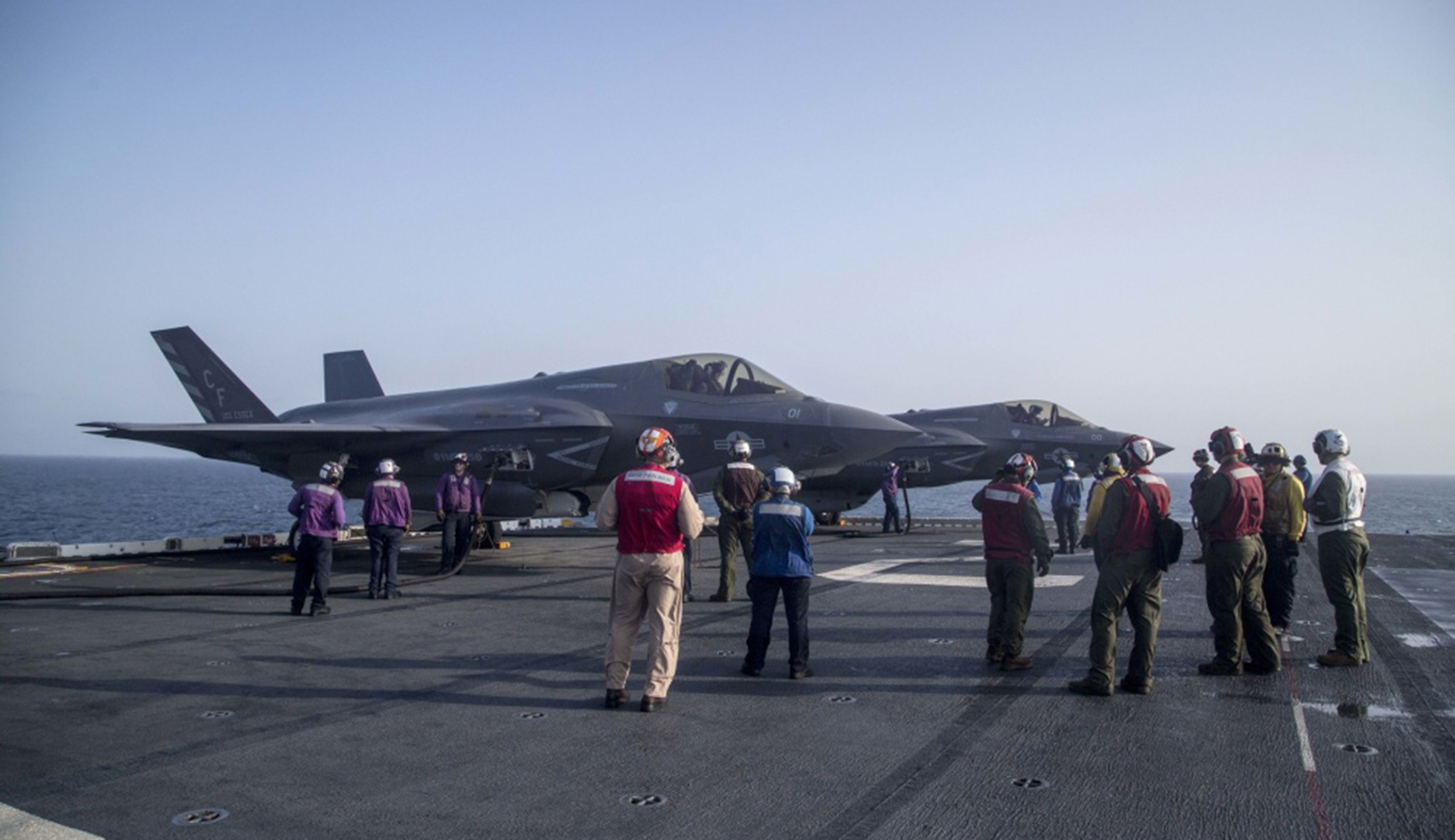The Marine version of the F-35 Lightning II, flying off the amphibious assault ship USS Essex in the Arabian Sea, conducted an airstrike against targets in Afghanistan “in support of ground clearance operations,” according to a statement from Marine Corps Headquarters.
“The F-35B is a significant enhancement in theater amphibious and air warfighting capability, operational flexibility, and tactical supremacy,” said Vice Adm. Scott Stearney, commander of U.S. Naval Forces Central command. “As part of the Essex Amphibious Ready Group, this platform supports operations on the ground from international waters, all while enabling maritime superiority that enhances stability and security.”
The Marines fly the F-35B, a vertical take-off/short-landing variant of the fifth-generation fighter jet.
Production of the F-35 began in 2006, and the cost of the program has grown to more than $400 billion, making it the Pentagon’s most expensive weapons acquisition program ever.
The Pentagon plans to buy a total of 2,456 F-35s from Lockheed Martin — 1,763 F-35As for the Air Force, 353 F-35Bs for the Marine Corps, and 340 F-35Cs for the Navy and Marine Corps, according the F-35 Joint Program Office.
The jet made its international combat debut in May, when Israeli pilots conducted “the first operational F-35 strike in the world,” Israel Air Force commander Maj. Gen. Amikam Norkin said.
F-35B Lightning II
U.S. Marines with Marine Fighter Attack Squadron 211, 13th Marine Expeditionary Unit , load ordnance into an F-35B Lightning II aboard the Wasp-class amphibious assault ship USS Essex in preparation for the F-35B’s first combat strike on Thursday.
(U.S. Marine Corps photo by Cpl. A. J. Van Fredenberg/Released)
F-35B Lightning II
U.S. Marines with Marine Fighter Attack Squadron 211, 13th Marine Expeditionary Unit, load ordnance into an F-35B Lightning II aboard the Wasp-class amphibious assault ship USS Essex in preparation for the F-35B’s first combat strike on Thursday.
(U.S. Marine Corps photo by Cpl. A. J. Van Fredenberg/Released)
F-35B Lightning II
U.S. Marines with Marine Fighter Attack Squadron 211, 13th Marine Expeditionary Unit, stage ordnance before loading it into an F-35B Lightning II aboard the Wasp-class amphibious assault ship USS Essex in preparation for the F-35B’s first combat strike on Thursday.
(U.S. Marine Corps photo by Cpl. A. J. Van Fredenberg/Released)
F-35B Lightning II
U.S. Marines with Marine Fighter Attack Squadron 211, 13th Marine Expeditionary Unit, ensure a panel is secure on an F-35B Lightning II in preparation for the F-35B’s first combat strike on Thursday.
(U.S. Marine Corps photo by Cpl. Francisco J. Diaz Jr./Released)
F-35B Lightning II
U.S. Navy Petty Officer 1st Class Rey White, an aviation boatswain’s mate handler with the Essex Amphibious Ready Group, launches an F-35B Lightning II with Marine Fighter Attack Squadron 211, 13th Marine Expeditionary Unit, from the Wasp-class amphibious assault ship USS Essex, before the F-35B’s first combat strike on Thursday.
(U.S. Marine Corps photo by Cpl. Francisco J. Diaz Jr./Released)
F-35B Lightning II
U.S. Sailors with the Essex Amphibious Ready Group refuel an F-35B Lightning II with Marine Fighter Attack Squadron 211, 13th Marine Expeditionary Unit, aboard the Wasp-class amphibious assault ship USS Essex in preparation for the F-35B’s first combat strike on Thursday.
(U.S. Marine Corps photo by Cpl. Francisco J. Diaz Jr./Released)
F-35B Lightning II
U.S. Marines and Sailors with the Essex Amphibious Ready Group and the 13th Marine Expeditionary Unit wait for flight operations to begin while F-35B Lightning IIs with Marine Fighter Attack Squadron 211, 13th MEU, are refueled in preparation for the F-35B’s first combat strike on Thursday.
(U.S. Marine Corps photo by Cpl. Francisco J. Diaz Jr./Released)
And while this week’s strike marks the first time a U.S. F-35 dropped ordnance in combat, officials say it was not the first operational deployment in an active combat zone.
Earlier in the month, Marine Corps F-35Bs from the Essex flew reconnaissance and surveillance missions over Somalia, and were ready to provide close-air support to U.S. troops on the ground if needed.
The F-35 that was first to strike a target in Afghanistan was assigned to Marine Fighter Attack Squadron 211 deployed with the 13th Marine Expeditionary Unit.

